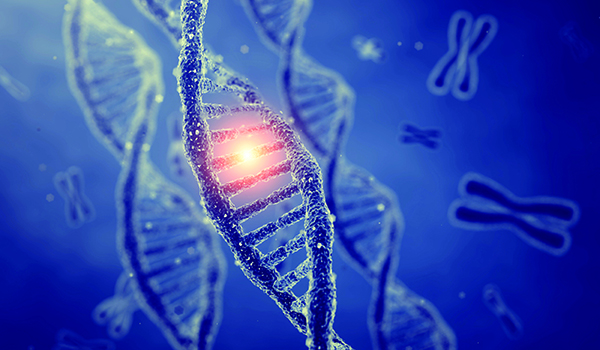
By:
Muhammad Tegar Kusmahidayat Konenda S.Pt.
First Expert Livestock Seed Inspector
Livestock business practitioners make various efforts to increase livestock productivity. However, often the increase in productivity is only done through feed modifications and environmental control efforts, neglecting genetic factors. Genetic factors are actually one of the most important factors that determine livestock productivity. For example, previous research has stated that over 40% of dairy cow milk production is influenced by genetics. The question is, how do we increase livestock productivity while considering genetic factors? One way is through selection. Choosing animals with high productivity from the population and then breeding them. Now, one thing that can be said to be the most important in carrying out selection is heritability.
What is Heritability?
In general, the understanding of heritability can be divided into two. First, broad-sense heritability, which is the comparison between the genetic variance, which is a combination of additive genetic, dominant, and epistasis variance, with phenotypic variance.
Broad-sense heritability can only explain how much of the phenotypic variation is caused by genetic influences and how much by environmental factors. It cannot explain the proportion of phenotypic variation in parents that can be inherited by their offspring. It is known that the genotype of an animal is not fully inherited by its offspring. The advantages of an animal caused by genes that act through dominance and epistasis will be broken down during the process of crossing over and segregation during meiosis. Therefore, broad-sense heritability is not useful in animal breeding.
Second, narrow-sense heritability, which is the comparison between additive genetic variance and phenotypic variance. Narrow-sense heritability is denoted as h2.
Is Understanding Heritability Important?
Heritability is one of the most important considerations in animal evaluation, selection methods, and mating systems. Specifically, heritability is a part of the total variation in traits caused by genetic differences among observed animals. Heritability is the comparison between genetic variance and phenotypic variance. Phenotypic variance is influenced by genetic and environmental factors.
Heritability is a part of the description of a trait in a group of animals under certain conditions. Variation may occur during the same period between animal groups or within the same animal group over different periods. Naturally, these differences may arise due to genetic and environmental differences between groups from year to year.
Theoretically, the value of heritability ranges from 0 to 1, but extreme values of zero or one are rarely found in quantitative traits of animals. Traits with heritability values of zero are traits where all phenotypic variations in the animal are solely caused by environmental factors, and genetic influence is assumed to be absent. A heritability value of 1 indicates a quantitative trait where all variation is due to genetic factors.
Heritability values are categorized into three categories: low, moderate, and high. A heritability value is considered low (small) if it ranges from 0 to 0.2; moderate: 0.2 to 0.4; and high if it's greater than 0.4. Preston and Willis (1974) classified heritability values as low if they are less than 0.25, moderate if they are between 0.25 and 0.50, and high if they are greater than 0.50. According to Hardjosubroto (1994), heritability values are considered low if they are less than 0.10; moderate if they range from 0.10 to 0.30; and high if they are greater than 0.30.
How to Calculate Heritability
There are many ways to obtain heritability values. One method may not necessarily give exactly the same value as another method. The calculation of heritability is usually based on variance components. It is generally done on newly formed populations.
Another method of estimating heritability is through regression. In breeding, this method is known as parent-offspring regression (PO regression). The estimation of heritability is based on relationships, namely half-sib and full-sib relationships. For crossbreeding, if the progeny of half-siblings is regressed with a single parent, then h2 = 2b applies, where b = Cov (P,O)/Var (P). Similarly, for crossbreeding, if full-siblings are regressed with the mid-parent between F1 and F2, or F2 and F3, and so on, then h2 = b applies. With this P-O regression, estimation may be biased if the assumptions used (no relationship between parents P1 and P2 or no additive gene role, or different scales) do not apply, so for further testing, there is a correction caused by these relationships.
For estimating broad-sense heritability through another method, it can be obtained simply by planting both F1 and F2 populations from the same individual in one experiment. The variation of F1 is environmental variance, while the variation in F2 consists of genetic and environmental variance. Thus, the heritability of that trait is:
h2bs = σG2 / (σG2 + σE2) = (σF2^2 – σF1^2) / σF2^2
Another example is when we have a set of the second generation parents (A and B), F1 from A x B, backcross F1 to each parent [BC1 = (A x B) B and BC2 = (A x B) A], and F2 from the A x B cross. Estimating heritability based on this population will be better because the estimation of environmental variance is more accurate, based on the average of A, B, and A x B. These three populations are expected not to segregate and provide a better environmental variance value than F1 alone. By including both parent individuals, F1, BC1, BC2, and F2, we can estimate heritability in the narrow sense, in this case:
h2ns = 1/2 x σA^2 / (1/2 σA^2 + 1/4 σD^2 + σE^2), where the numerator can be obtained from: 2σF2^2 – (σBC1^2 + σBC2^2). The denominator is the variance of F2 itself.
REFERENCES
Gunadi, B. Robisalmi, A., Setyawan P., and Lamanto. 2015. Heritability Values and Selection Response of F-3 Blue Nile Tilapia (Oreochromis aureus) Seeds in the Nursery Phase. Fish Breeding Research Center
Kurnianto, Edi. 2009. Animal Breeding. Graha Ilmu, Yogyakarta.
Noor, Ronny Rachman. 2010. Animal Genetics. Penebar Swadaya, Jakarta.
Rusfidra, A. 2006. Benefits of Heritability in Animal Breeding. https://bunghatta.ac.id/artikel-138



